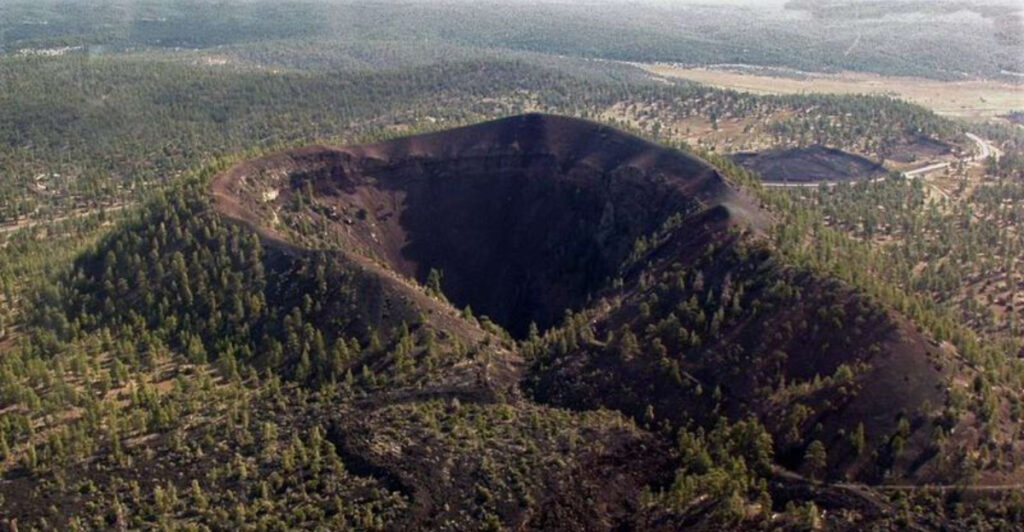El Malpaís National Monument in New Mexico showcases nature’s raw power through ancient volcanic eruptions that created a stark, dramatic landscape. These ‘badlands’ feature massive lava fields, mysterious underground tubes, and fascinating geological formations unlike anywhere else in America. Whether you’re a geology enthusiast, adventure seeker, or nature lover, these volcanic wonders offer an otherworldly experience right here on Earth.
1. Trek Across a Vast Volcanic Wilderness
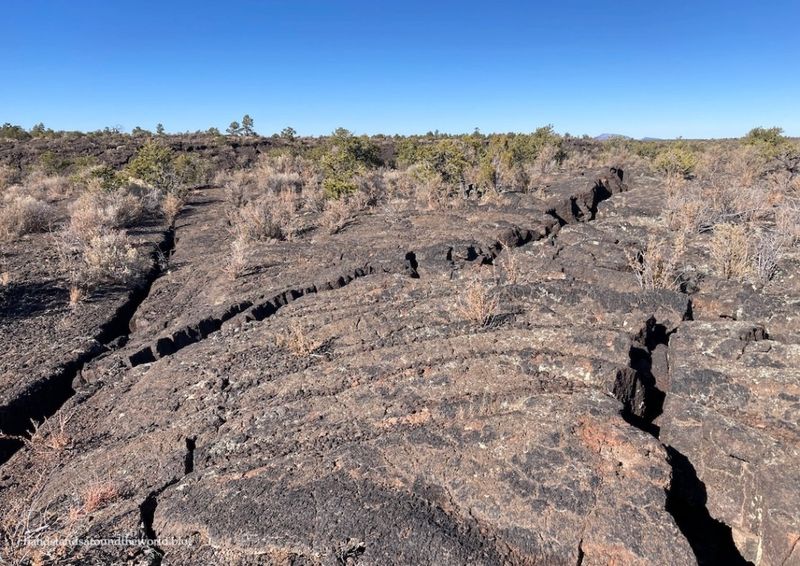
Spanning nearly 180 square miles, El Malpaís offers an unparalleled chance to wander through one of America’s most extensive lava fields. The blackened terrain formed as recently as 3,900 years ago, making it geologically young and remarkably preserved.
Walking these flows feels like exploring another planet. Each step reveals different volcanic features—pressure ridges, collapses, and swirls frozen in stone. Rangers often say the landscape tells the story of Earth’s fiery heart.
Trails range from accessible boardwalks to challenging scrambles, allowing visitors of all abilities to experience this remarkable terrain.
2. Feel Two Different Lava Types Under Your Feet
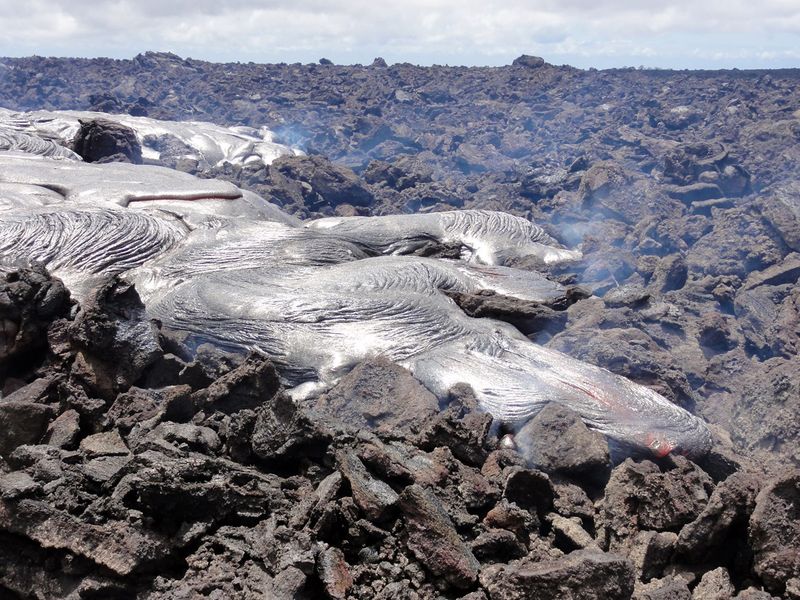
El Malpaís presents a rare opportunity to experience both major lava types side by side. Pāhoehoe (pronounced ‘pah-hoy-hoy’) forms smooth, ropy surfaces that coil and twist like frozen taffy. Its neighbor, ʻaʻa (pronounced ‘ah-ah’), creates jagged, clinker-like fields that crunch and shift underfoot.
The contrast between these formations isn’t just visual—it’s tactile. One minute you’re walking on what looks like bunched-up ropes, the next you’re carefully navigating sharp, broken fragments.
This natural geology classroom shows how the same molten rock can create dramatically different landscapes based on temperature and flow rate.
3. Marvel at Volcanic Cones and Shield Flows
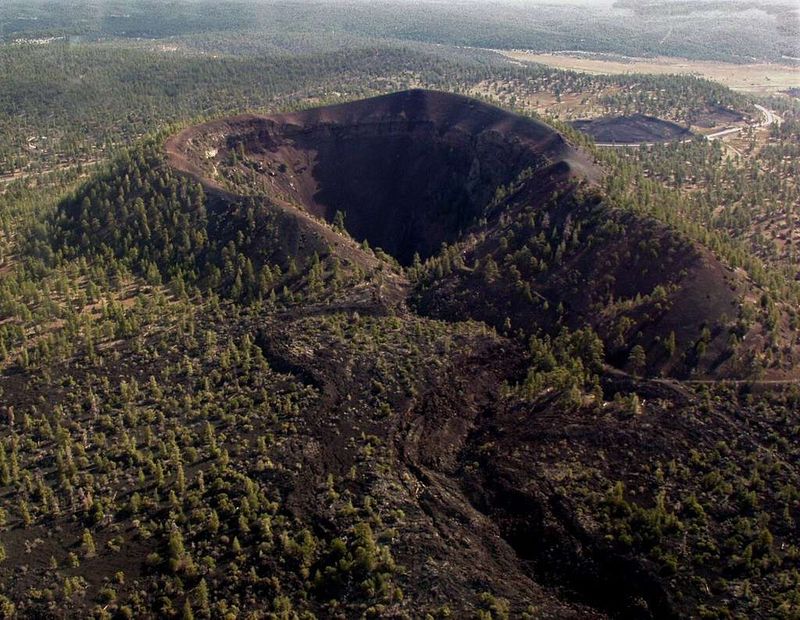
Bandera Crater rises 800 feet above the surrounding terrain, its massive cinder cone a testament to explosive volcanic power. Unlike many volcanic areas with just one eruption style, El Malpaís showcases multiple volcanic formations in close proximity.
El Calderón’s perfect bowl shape contrasts with the gentle slopes of shield volcanoes nearby. Each formation tells a different story of how magma reached the surface—some eruptions explosive and violent, others slow-flowing rivers of molten rock.
Standing at these vents, you can almost visualize the ancient flows that poured forth, creating the dramatic landscape that surrounds you today.
4. Navigate the Challenging Big Tubes Area Trail
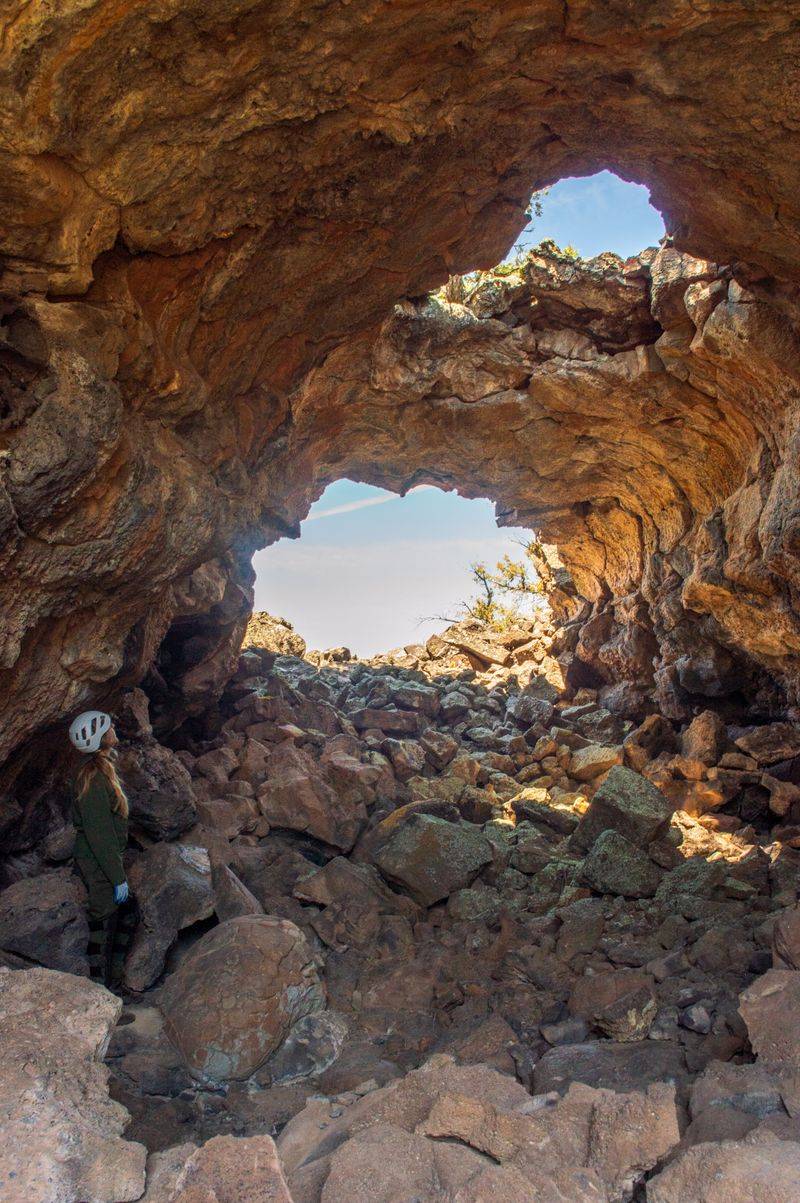
Adventure seekers flock to the Big Tubes Area Trail, a rugged 2-mile loop marked only by rock cairns. This trail isn’t your typical national park experience—no paved paths or handrails here. Instead, you’ll scramble over natural lava bridges and peer down into collapsed trenches.
The path winds through an area honeycombed with lava tubes, some visible through dramatic skylights where cave roofs have collapsed. Sunlight filters through these openings, creating stunning light beams against the dark volcanic rock.
Sturdy hiking boots and careful attention to the cairns are essential, as the rough terrain blends together easily and can disorient even experienced hikers.
5. Discover Ice-Filled Volcanic Caves

Perhaps the most surprising feature of El Malpaís is the presence of ice deep within its lava tubes. Giant Ice Cave maintains year-round ice formations, creating an otherworldly contrast of fire and ice—volcanic rock housing perpetual frost.
Nearby, Lava Bomb Cave earned its name from a massive projectile that punched through the ceiling during an eruption. The tube walls glitter with mineral deposits including delicate gypsum formations that have formed over centuries.
These underground worlds remain largely undeveloped, preserving their pristine condition and sense of discovery. Some visitors describe the feeling as stepping into a natural cathedral shaped by ancient volcanic forces.
6. Become a Modern Explorer with a Caving Permit
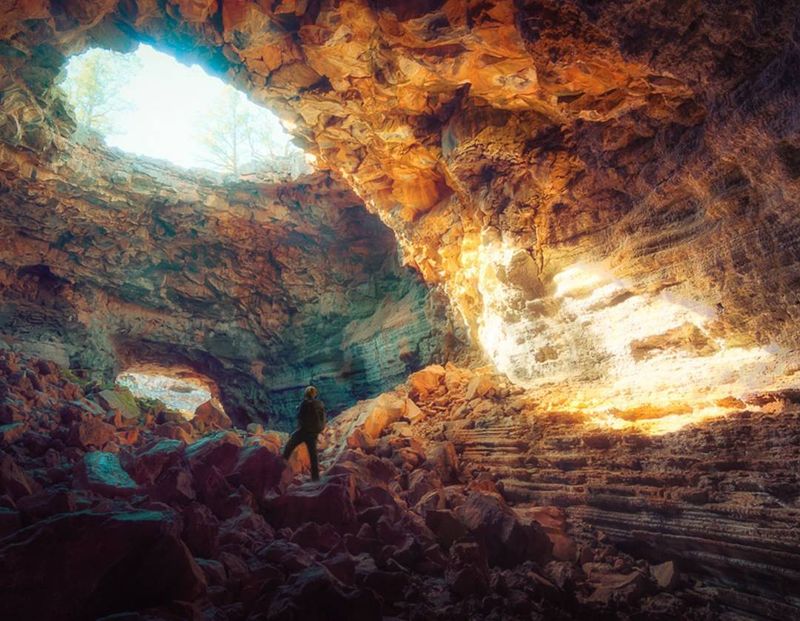
El Malpaís offers a genuine exploration experience unlike most national parks. Free caving permits grant access to undeveloped lava tubes that feel straight out of an adventure film. The monument limits daily visitors to protect these fragile environments.
Crawling through narrow passages with just your headlamp illuminating the volcanic textures creates an intimate connection with geologic history. No artificial lighting, no developed walkways—just you and chambers formed by ancient lava flows.
Rangers provide safety briefings and cave locations, but the actual navigation and discovery are entirely up to you. Proper equipment (helmet, gloves, sturdy boots, and multiple light sources) is essential for this unforgettable subterranean adventure.
7. Gaze Across Lava Fields from Sandstone Bluffs
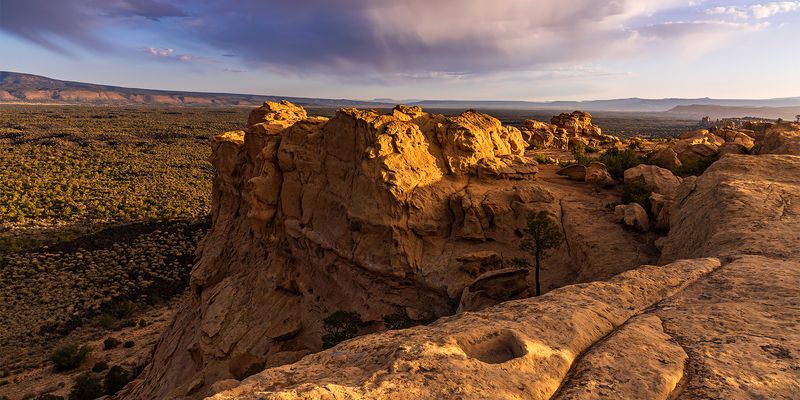
Sandstone Bluffs Overlook provides the ultimate panoramic view of El Malpaís. From this elevated vantage point, the full scale of the lava flows becomes apparent—vast black rivers frozen in time stretching toward the horizon.
The contrast between the reddish sandstone you stand on and the dark basalt below creates a striking visual that photographers chase, especially during golden hour. On clear days, sacred Mount Taylor looms in the distance, adding another layer to the vista.
Accessible via a short drive on a dirt road, this overlook offers one of the easiest ways to appreciate the monument’s grandeur without a strenuous hike. Many visitors bring picnics to enjoy while soaking in the sweeping landscape.
8. Step Back in Time at Candelaria Pueblo
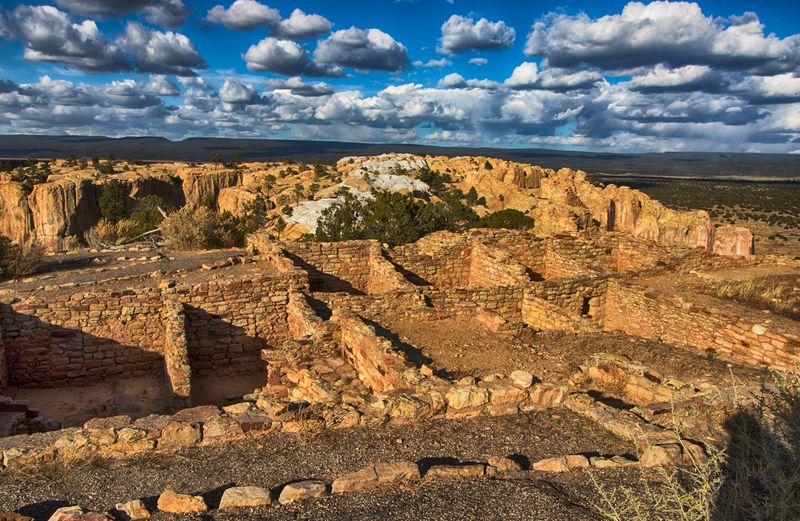
Tucked alongside the lava fields lie the ruins of Candelaria Pueblo, where ancestral Puebloan people built a 60-room complex from the very basalt that surrounded them. This archaeological site reveals how humans adapted to life in this harsh volcanic environment between 1100 and 1400 CE.
The pueblo’s strategic location provided natural protection, with the rugged lava flows creating a natural barrier against threats. Evidence suggests these resourceful inhabitants developed elaborate trade networks with neighboring communities.
Walking among these ancient walls offers a powerful connection to the human history that unfolded here long before European contact. The site demonstrates the remarkable resilience of those who found ways to thrive in what seems like an inhospitable landscape.
9. Witness Evening Bat Flights from Cave Entrances

As dusk settles over El Malpaís, an extraordinary natural spectacle unfolds at select cave entrances. Thousands of bats spiral out into the evening sky, their silhouettes dark against the fading light as they begin their nightly hunt for insects.
The monument’s caves provide ideal roosting habitat for several bat species, including Mexican free-tailed bats. These remarkable mammals navigate the complex underground passages with precision, returning to the exact same spots after their nocturnal foraging.
Rangers occasionally lead evening programs during summer months when bat activity peaks. Watching from a respectful distance, visitors can observe this natural phenomenon while learning about the crucial ecological role these flying mammals play in controlling insect populations.
10. Escape Crowds in Northern New Mexico’s Wilderness
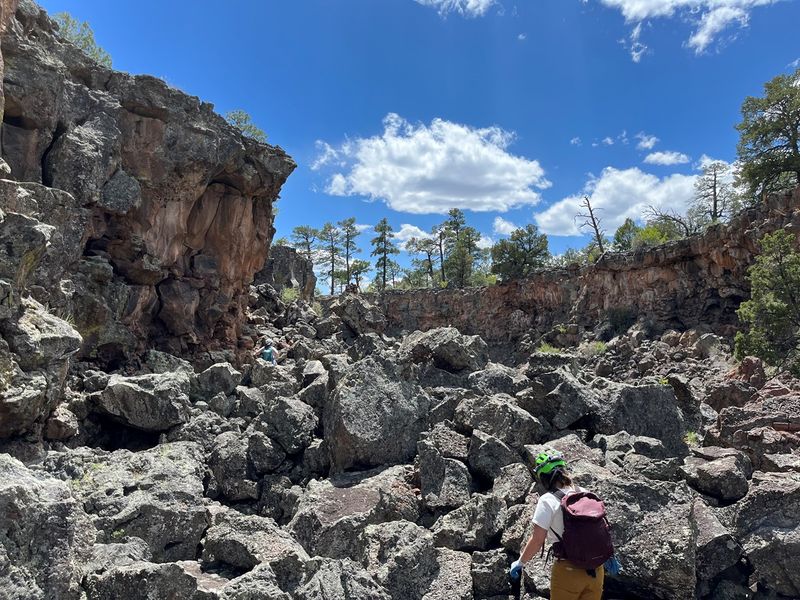
Unlike the state’s more famous attractions, El Malpaís offers a genuine wilderness experience where solitude comes standard. Visitors frequently report having entire sections of this remarkable landscape completely to themselves, even during peak travel seasons.
The monument’s remote location in western New Mexico keeps crowds naturally thin. The resulting silence allows you to hear subtle sounds often missed elsewhere—wind whistling through lava formations, ravens calling overhead, and the crunch of volcanic cinders underfoot.
This peaceful setting creates perfect conditions for mindfulness and reflection. Many travelers describe feeling a profound connection to Earth’s geological processes when standing alone amid these ancient volcanic remnants, far from the distractions of modern life.
11. Test Your Hiking Skills on Challenging Terrain
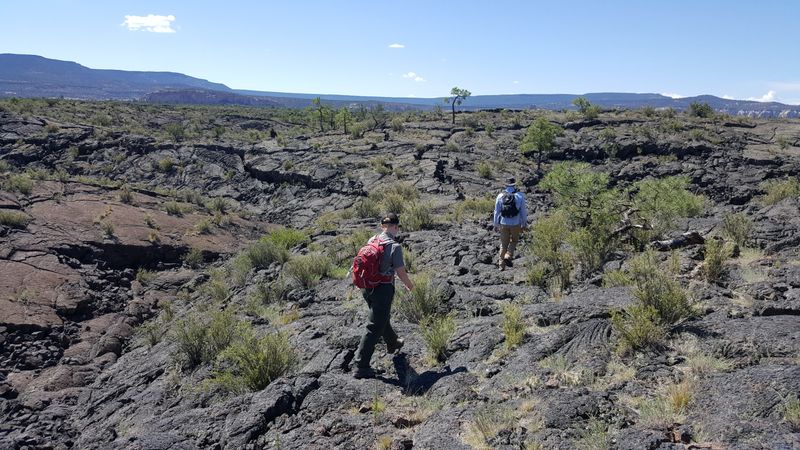
El Malpaís offers hiking experiences that range from gentle strolls to demanding scrambles across rugged volcanic landscapes. The Zuni-Acoma Trail, an ancient Native American trading route, crosses seven miles of lava flows and presents a physical challenge even for experienced hikers.
The uneven, sometimes sharp volcanic terrain demands careful foot placement and sturdy boots. Many visitors report that crossing just one mile of lava field can take twice as long as hiking a regular trail.
For those seeking extreme adventure, off-trail exploration in designated wilderness areas provides the ultimate test of navigation and endurance. The monument’s varied terrain ensures visitors can find routes matching their skill level, from accessible viewpoints to remote lava tube systems requiring technical caving skills.
12. Cruise the Scenic Chain of Craters Byway
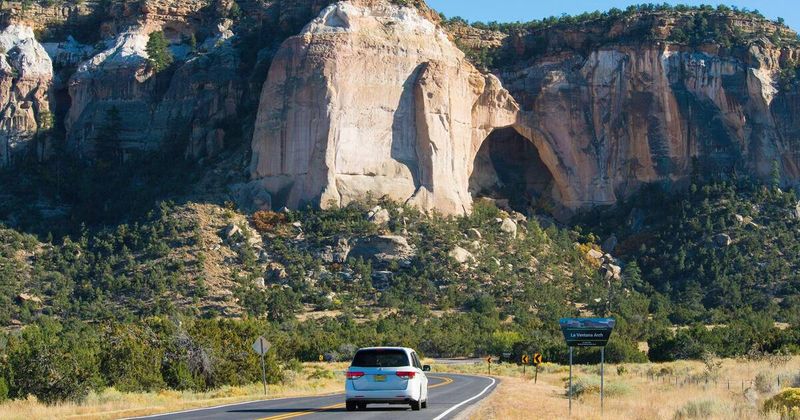
The Chain of Craters Byway offers a stunning drive through volcanic landscapes for those who prefer exploring on wheels. This scenic route winds past numerous cinder cones and expansive lava fields, each turn revealing new perspectives on the monument’s dramatic geology.
Pull-offs along the way provide opportunities to step out and photograph the otherworldly scenery. The stark black basalt creates a landscape that many visitors describe as post-apocalyptic or moonlike in its barren beauty.
The route connects key monument features while passing through remote high desert backcountry. Driving this byway at sunset is particularly magical, as the low light accentuates the texture of the lava flows and casts long shadows from the volcanic cones, creating a photographer’s paradise.
13. Photograph Dramatic Geological Contrasts
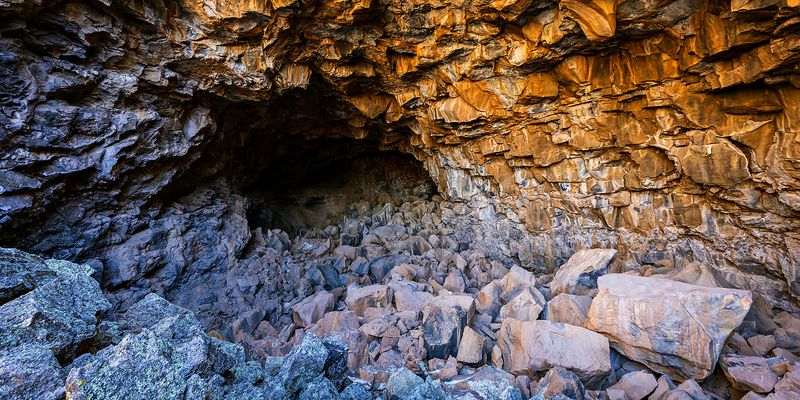
El Malpaís offers photographers an exceptional canvas of natural contrasts rarely found elsewhere. The jet-black basalt flows create striking boundaries where they meet the reddish Dakota sandstone cliffs, presenting perfect compositional lines that lead the eye through images.
Sunset brings the most dramatic lighting conditions, when the low-angle golden light illuminates the textured surfaces of the lava fields. The resulting shadows highlight every ripple, bubble and flow pattern frozen in stone thousands of years ago.
Weather adds another dynamic element, with summer monsoon storms creating spectacular backdrops as dark clouds gather over the volcanic landscape. Even smartphone photographers capture remarkable images here, though serious photographers often bring wide-angle lenses to encompass the vast, dramatic scenery.
14. Experience Year-Round Seasonal Transformations
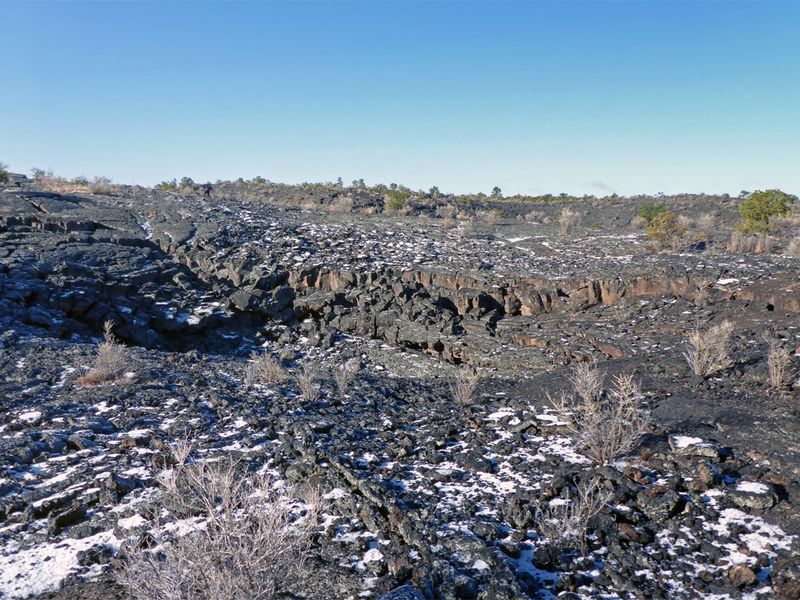
Unlike many national monuments that have a single prime season, El Malpaís offers distinctive experiences throughout the year. Spring brings wildflowers that somehow find purchase in cracks between lava rocks, creating splashes of unexpected color against the black backdrop.
Summer monsoons transform the landscape as afternoon thunderstorms build dramatic clouds over the lava fields. Fall brings crisp mornings with exceptional visibility, making it ideal for photography and distant views of surrounding mountains.
Winter offers perhaps the most magical experience, when occasional snow dusts the black lava flows with white, creating a monochromatic landscape of extraordinary beauty. The monument’s relatively mild winters and year-round accessibility mean there’s never a bad time to explore this volcanic wonderland.

